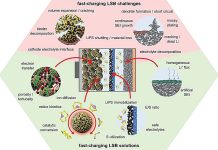
In a new study, researchers have made big progress in using artificial intelligence (AI) to develop safe, clean and virtually limitless fusion energy.
They used deep learning to forecast sudden disruptions, protect fusion reactions, and prevent damage to tokamaks, which house the reactions.
The research was conducted by the U.S. Department of Energy’s (DOE) Princeton Plasma Physics Laboratory (PPPL), Princeton University, and Harvard University.
AI is a branch of computer science that is transforming scientific inquiry and industry. A key feature of deep learning is that it can capture high-dimensional rather than one-dimensional data.
Fusion is the fusing of light elements in the form of plasma that produces energy.
Scientists have been trying to replicate fusion on Earth for an abundant supply of power for the production of electricity.
In the current study, the team used vast databases from the DIII-D National Fusion Facility that General Atomics operates for the DOE in California, and the Joint European Torus (JET) in the United Kingdom.
The databases helped train the deep learning to make reliable predictions of disruptions on ITER, which is a far larger and more powerful tokamak that will have to apply capabilities learned on today’s fusion facilities.
The deep learning code is called the Fusion Recurrent Neural Network (FRNN). The training and running neural networks rely on graphics processing units (GPUs).
The team first ran the software on Princeton University’s Tiger cluster of modern GPUs.
Then they placed it on Titan, which is a supercomputer at the Oak Ridge Leadership Computing Facility and other high-performance machines.
By doing these, the team accelerated the ability to predict disruptions with high accuracy.
The software further showed its ability to predict true disruptions within the 30-millisecond time frame that ITER will require and it reduced the number of false alarms.
They believe that the ability of deep learning to learn from very complex data make it an ideal candidate for the task of disruption prediction.
Future work needs to move from prediction to the control of disruptions. Control will be essential for post-ITER tokamaks.
The lead author of the study is Julian Kates-Harbeck, a physics graduate student at Harvard University and a DOE-Office of Science Computational Science Graduate Fellow.
The study is published in Nature.
Copyright © 2019 Knowridge Science Report. All rights reserved.



